A Silicone Resin Coating with Water-Repellency and Anti-Fouling Properties for Wood Protection
Abstract
:1. Introduction
2. Materials and Methods
2.1. Materials
2.2. Preparation of HFSO/V4/SiO2 Modifier Solutions
2.3. Preparation of Superhydrophobic Wood Samples
2.4. Characterization
3. Results
3.1. Formation Mechanism of Superhydrophobic Silicone Resin Coating on Wood Surface
3.2. Effect of Mass Ratio of HFSO/V4 on the Hydrophobic Properties of Silicone Resin Coatings on Wood Surfaces
3.3. FTIR Analysis
3.4. Surface Morphology Analysis
3.5. Evaluation of Hygroscopicity and Dimensional Stability
3.6. Durability Analysis of Modified Wood
3.7. Anti-Fouling Properties of Superhydrophobic Silicone Resin Coatings
4. Conclusions
Supplementary Materials
Author Contributions
Funding
Institutional Review Board Statement
Informed Consent Statement
Data Availability Statement
Conflicts of Interest
References
- Wang, S.; Liu, C.; Liu, G.; Zhang, M.; Li, J.; Wang, C. Fabrication of superhydrophobic wood surface by a sol-gel process. Appl. Surf. Sci. 2011, 258, 806–810. [Google Scholar] [CrossRef]
- Fu, Y.; Li, G.; Yu, H.; Liu, Y. Hydrophobic modification of wood via surface-initiated ARGET ATRP of MMA. Appl. Surf. Sci. 2012, 258, 2529–2533. [Google Scholar] [CrossRef]
- Matsunaga, M.; Hewage, D.C.; Kataoka, Y.; Ishikawa, A.; Kobayashi, M.; Kiguchi, M. Acetylation of wood using supercritical carbon dioxide. J. Trop. For. Sci. 2016, 28, 132–138. [Google Scholar]
- Lu, Y.; Feng, M.; Zhan, H. Preparation of SiO2–wood composites by an ultrasonic-assisted sol–gel technique. Cellulose 2014, 21, 4393–4403. [Google Scholar] [CrossRef]
- Chang, H.; Tu, K.; Wang, X.; Liu, J. Fabrication of mechanically durable superhydrophobic wood surfaces using polydimethylsiloxane and silica nanoparticles. RSC Adv. 2015, 5, 30647–30653. [Google Scholar] [CrossRef]
- Kumar, A.; Richter, J.; Tywoniak, J.; Hajek, P.; Adamopoulos, S.; Segedin, U.; Petric, M. Surface modification of Norway spruce wood by octadecyltrichlorosilane (OTS) nanosol by dipping and water vapour diffusion properties of the OTS-modified wood. Holzforschung 2017, 72, 45–56. [Google Scholar] [CrossRef]
- Kong, L.; Tu, K.; Guan, H.; Wang, X. Growth of high-density ZnO nanorods on wood with enhanced photostability, flame retardancy and water repellency. Appl. Surf. Sci. 2017, 407, 479–484. [Google Scholar] [CrossRef]
- Chen, Z.; Su, X.; Wu, W.; Chen, S.; Zhang, X.; Wu, Y.; Xie, H.; Li, K. Superhydrophobic PDMS@TiO2 wood for photocatalytic degradation and rapid oil-water separation. Surf. Coat. Technol. 2022, 434, 128182–128193. [Google Scholar] [CrossRef]
- Gao, L.; Lu, Y.; Zhan, X.; Li, J.; Sun, Q. A robust, anti-acid, and high-temperature-humidity-resistant superhydrophobic surface of wood based on a modified TiO2 film by fluoroalkyl silane. Surf. Coat. Technol. 2015, 262, 33–39. [Google Scholar] [CrossRef]
- Jia, S.; Liu, M.; Wu, Y.; Luo, S.; Qing, Y.; Chen, H. Facile and scalable preparation of highly wear-resistance superhydrophobic surface on wood substrates using silica nanoparticles modified by VTES. Appl. Surf. Sci. 2016, 386, 115–124. [Google Scholar] [CrossRef]
- Wu, Y.; Jia, S.; Qing, Y.; Luo, S.; Liu, M. A versatile and efficient method to fabricate durable superhydrophobic surfaces on wood, lignocellulosic fiber, glass, and metal substrates. J. Mater. Chem. 2016, 4, 14111–14121. [Google Scholar] [CrossRef]
- Lin, W.; Huang, Y.; Li, J.; Liu, Z.; Yang, W.; Li, R.; Chen, H.; Zhang, X. Preparation of highly hydrophobic and anti-fouling wood using poly(methylhydrogen)siloxane. Cellulose 2018, 25, 7341–7353. [Google Scholar] [CrossRef]
- Jia, S.; Lu, X.; Luo, S.; Qing, Y.; Yan, N.; Wu, Y. Efficiently texturing hierarchical epoxy layer for smart superhydrophobic surfaces with excellent durability and exceptional stability exposed to fire. Chem. Eng. J. 2018, 348, 212–223. [Google Scholar] [CrossRef]
- Tu, K.; Wang, X.; Kong, L.; Guan, H. Facile preparation of mechanically durable, self-healing and multifunctional superhydrophobic surfaces on solid wood. Mater. Des. 2018, 140, 30–36. [Google Scholar] [CrossRef]
- Tu, K.; Wang, X.; Kong, L.; Chang, H.; Liu, J. Fabrication of robust, damage-tolerant superhydrophobic coatings on naturally micro-grooved wood surfaces. RSC Adv. 2016, 6, 701–707. [Google Scholar] [CrossRef]
- Jia, S.; Chen, H.; Luo, S.; Qing, Y.; Deng, S.; Yan, N.; Wu, Y. One-step approach to prepare superhydrophobic wood with enhanced mechanical and chemical durability: Driving of alkali. Appl. Surf. Sci. 2018, 455, 115–122. [Google Scholar] [CrossRef]
- Lin, W.; Zhang, X.; Cai, Q.; Yang, W.; Chen, H. Dehydrogenation-driven assembly of transparent and durable superhydrophobic ORMOSIL coatings on cellulose-based substrates. Cellulose 2020, 1, 7805–7821. [Google Scholar] [CrossRef]
- Xie, L.; Tang, Z.; Jiang, L.; Breedveld, V.; Hess, D.W. Creation of superhydrophobic wood surfaces by plasma etching and thin-film deposition. Surf. Coat. Technol. 2015, 281, 125–132. [Google Scholar] [CrossRef]
- Wang, S.; Wang, C.; Liu, C.; Zhang, M.; Ma, H.; Li, J. Fabrication of superhydrophobic spherical-like α-FeOOH films on the wood surface by a hydrothermal method. Colloids Surf. A 2012, 403, 29–34. [Google Scholar] [CrossRef]
- Liu, M.; Qing, Y.; Wu, Y.; Liang, J.; Luo, S. Facile fabrication of superhydrophobic surfaces on wood substrates via a one-step hydrothermal process. Appl. Surf. Sci. 2015, 1, 332–338. [Google Scholar] [CrossRef]
- Xi, L.; Hu, Y. Layer-by-layer Deposition of TiO2 Nanoparticles in the Wood Surface and its Superhydrophobic Performance. Bioresources 2016, 11, 4605–4620. [Google Scholar]
- Yue, D.; Lin, S.; Cao, M.; Lin, W.; Zhang, X. Fabrication of transparent and durable superhydrophobic polysiloxane/SiO2 coating on the wood surface. Cellulose 2021, 28, 3745–3758. [Google Scholar] [CrossRef]
- Yue, D.; Feng, Q.; Huang, X.; Zhang, X.; Chen, H. In Situ Fabrication of a Superhydrophobic ORMOSIL Coating on Wood by an Ammonia-HMDS Vapor Treatment. Coatings 2019, 9, 556. [Google Scholar] [CrossRef] [Green Version]
- Yang, Y.; Shan, L.; Shen, H.; Qiu, J. Manufacturing of robust superhydrophobic Wood surfaces based on PEG-Functionalized SiO2/PVA/PAA/Fluoropolymer hybrid transparent coating. Prog. Org. Coat. 2021, 154, 106186–106195. [Google Scholar] [CrossRef]
- Yang, J.; Li, H.; Yi, Z.; Liao, M.; Qin, Z. Stable superhydrophobic wood surface constracting by KH580 and nano-Al2O3 on polydopamine coating with two process methods. Colloids Surf. A 2022, 637, 128219–128229. [Google Scholar] [CrossRef]
- Zhang, X.; Xia, B.; Ding, B.; Zhang, Y.; Luo, J.; Jiang, B. Ultra-fast surface hydrophobic modification of sol-gel silica antireflective coating with enhanced abrasion-resistance. Mater. Lett. 2013, 104, 31–33. [Google Scholar] [CrossRef]
- Zhang, X.; Lin, W.; Zheng, J.; Sun, Y.; Xia, B.; Yan, L.; Jiang, B. Insight into the Organic-Inorganic Hybrid and Microstructure Tailor Mechanism of Sol-Gel ORMOSIL Antireflective Coatings. J. Phys. Chem. C 2017, 122, 10294–10302. [Google Scholar] [CrossRef]
- Wang, K.; Dong, Y.; Yan, Y.; Zhang, S.; Li, J. Improving dimensional stability and durability of wood polymer composites by grafting polystyrene onto wood cell walls. Polym. Compos. 2018, 39, 119–125. [Google Scholar] [CrossRef]
- Wang, K.; Dong, Y.; Yan, Y.; Zhang, W.; Qi, C.; Han, C.; Li, J.; Zhang, S. Highly hydrophobic and self-cleaning bulk wood prepared by grafting long-chain alkyl onto wood cell walls. Wood Sci. Technol. 2017, 51, 395–411. [Google Scholar] [CrossRef]
- Wu, Y.; Jia, S.; Wang, S.; Qing, Y.; Yan, N.; Wang, Q.; Meng, T. A facile and novel emulsion for efficient and convenient fabrication of durable superhydrophobic materials. Chem. Eng. J. 2017, 328, 186–196. [Google Scholar] [CrossRef]
- Lin, W.; Cao, M.; Olonisakin, K.; Li, R.; Zhang, X.; Yang, W. Superhydrophobic materials with good oil/water separation and self-cleaning property. Cellulose 2021, 28, 10425–10439. [Google Scholar] [CrossRef]


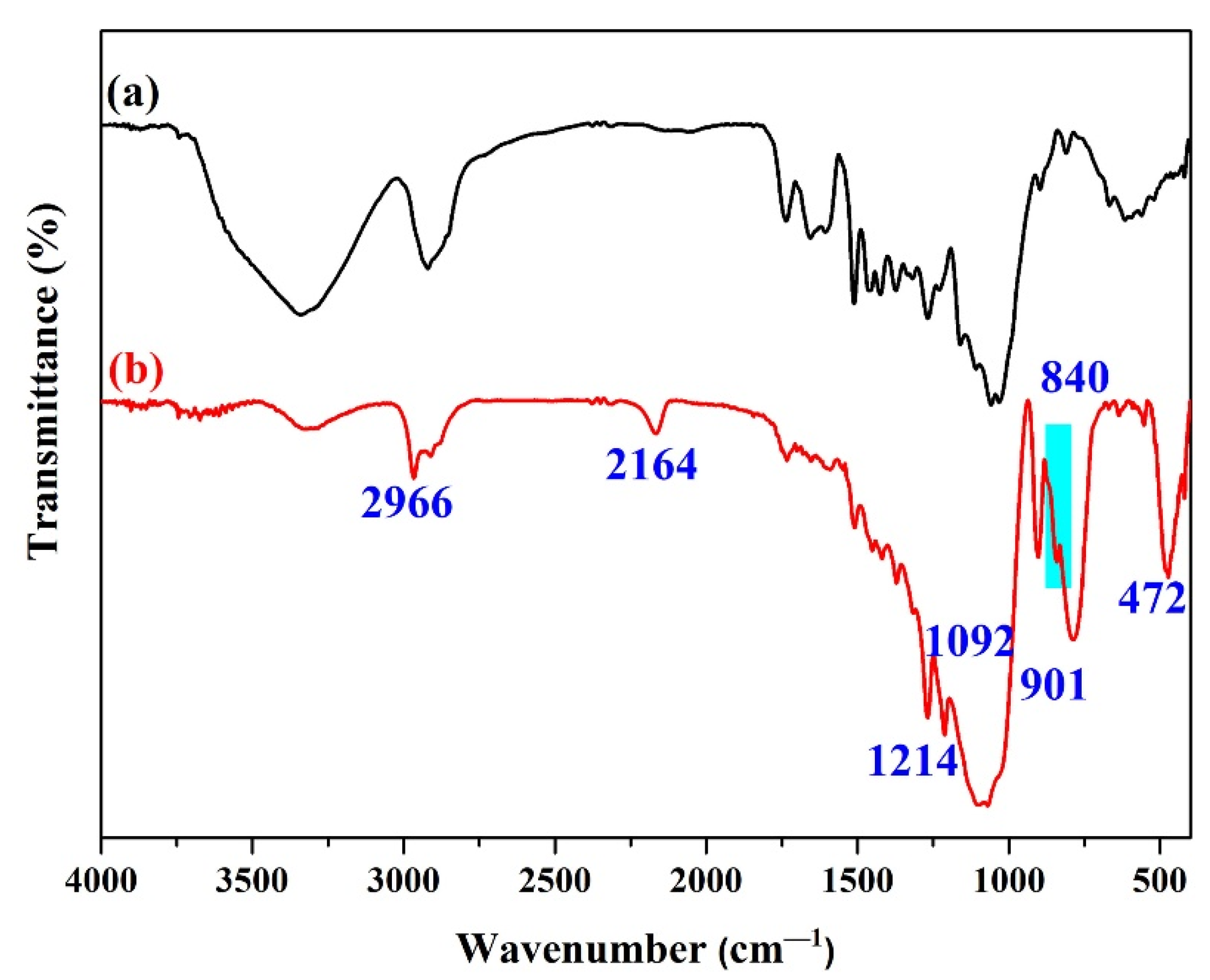
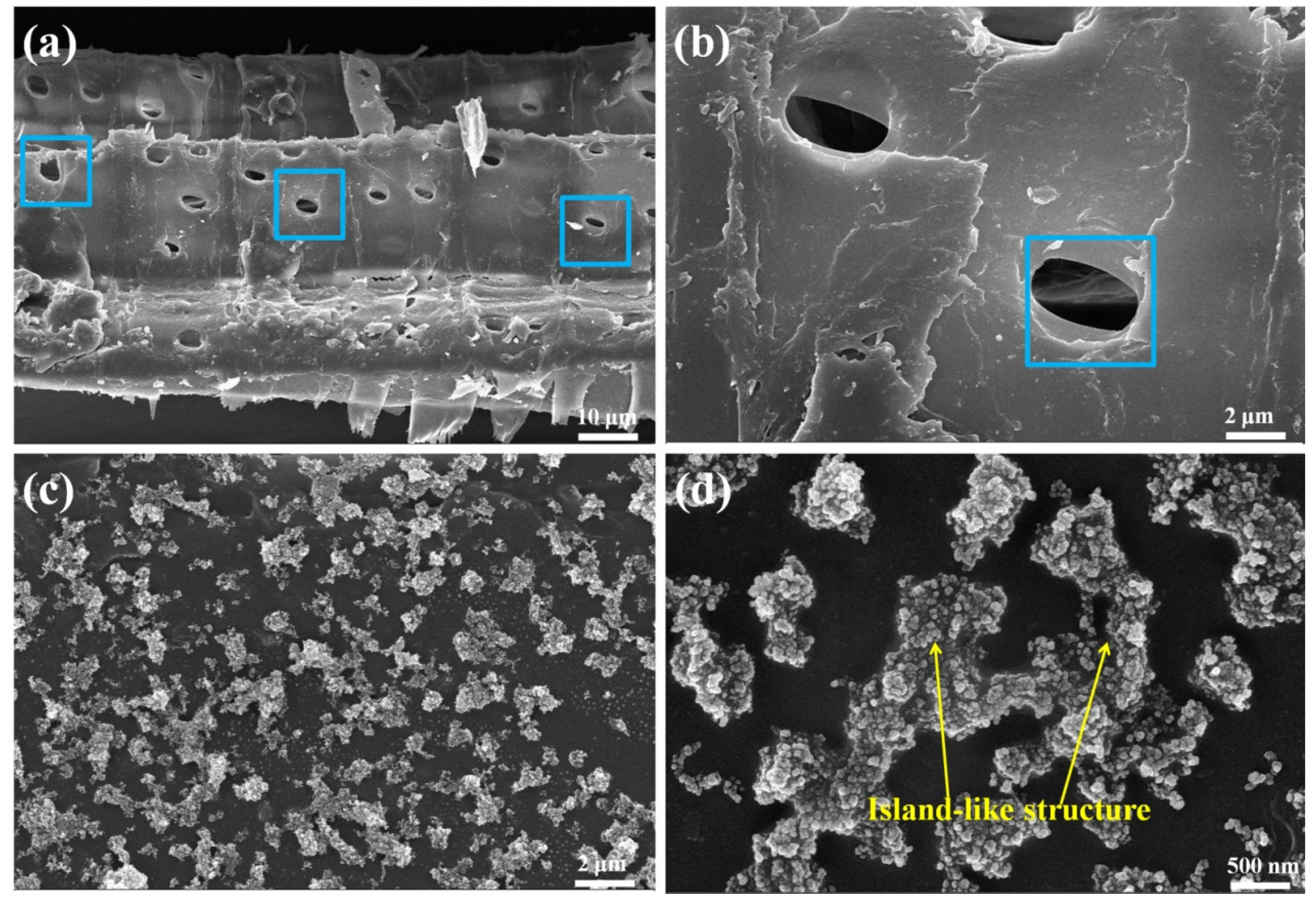
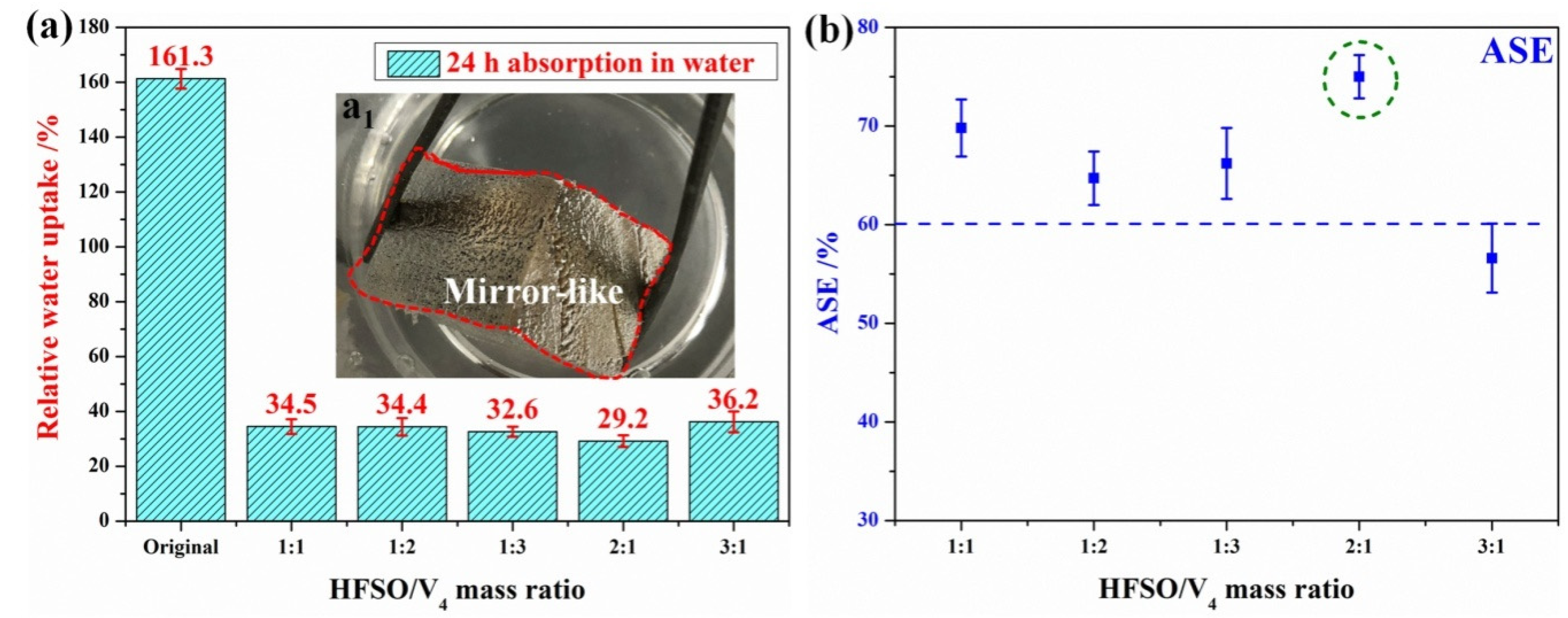
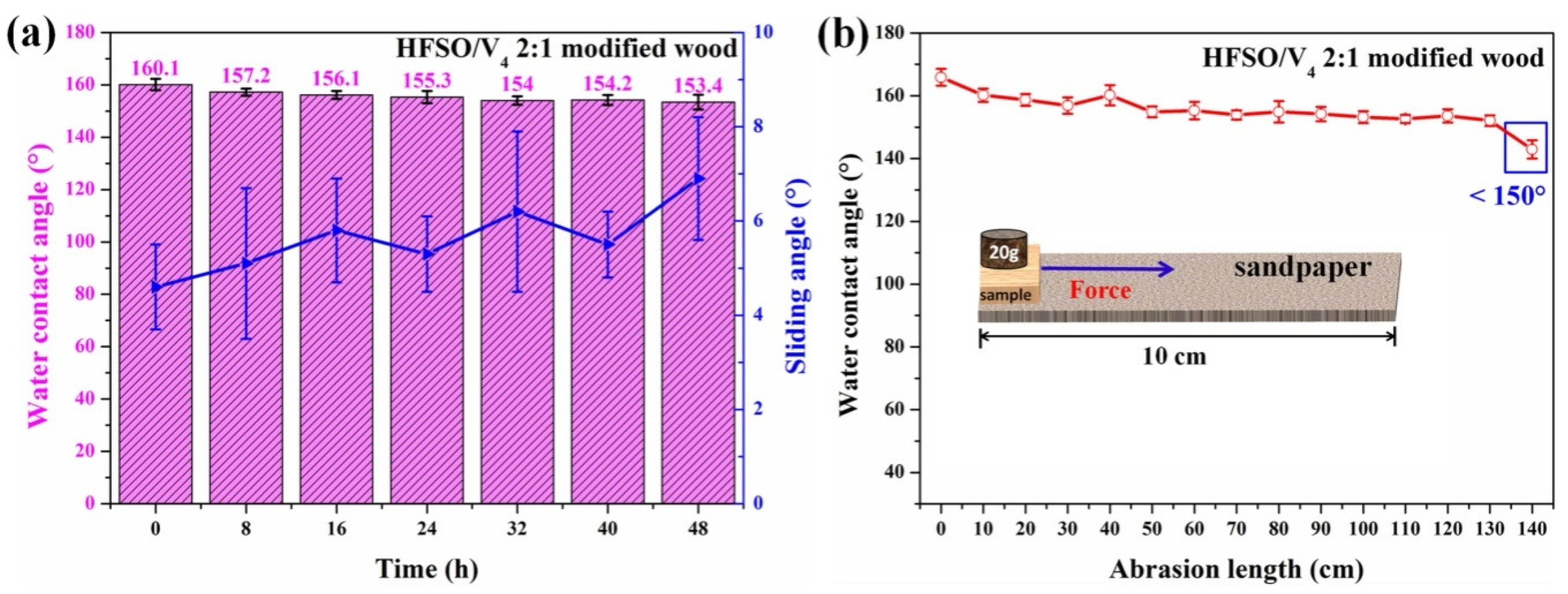
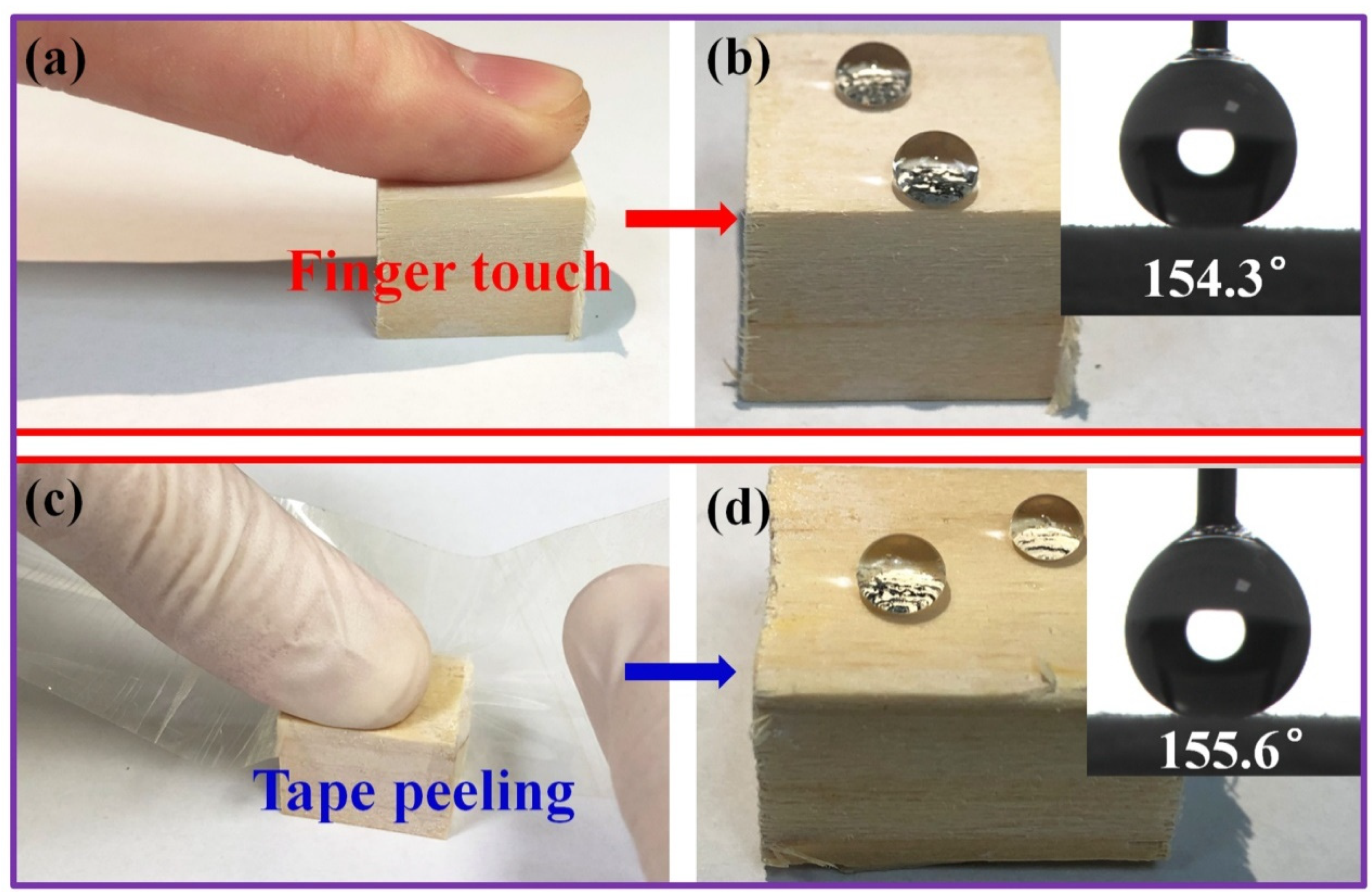
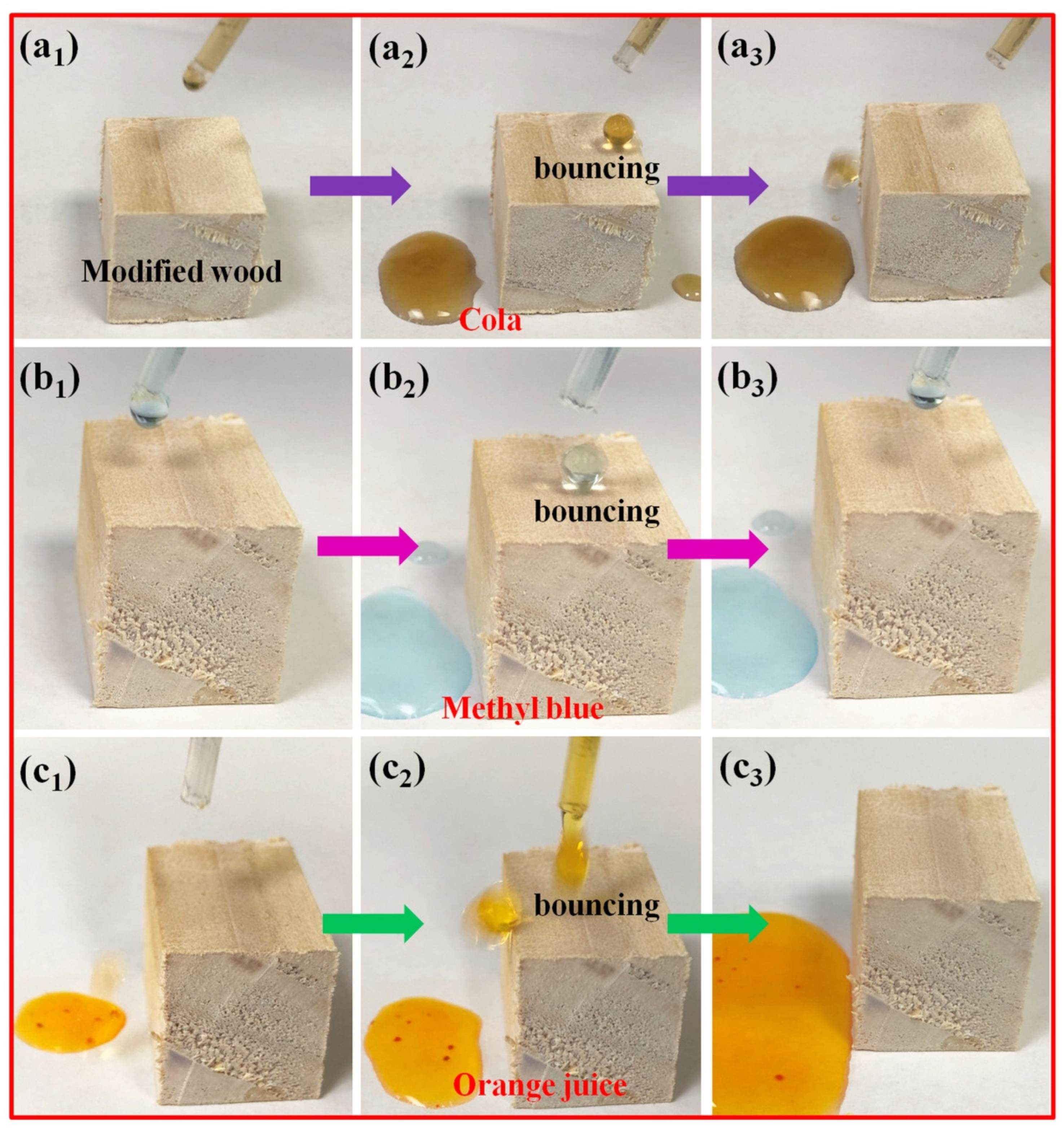
Publisher’s Note: MDPI stays neutral with regard to jurisdictional claims in published maps and institutional affiliations. |
© 2022 by the authors. Licensee MDPI, Basel, Switzerland. This article is an open access article distributed under the terms and conditions of the Creative Commons Attribution (CC BY) license (https://creativecommons.org/licenses/by/4.0/).
Share and Cite
Ding, Z.; Lin, W.; Yang, W.; Chen, H.; Zhang, X. A Silicone Resin Coating with Water-Repellency and Anti-Fouling Properties for Wood Protection. Polymers 2022, 14, 3062. https://doi.org/10.3390/polym14153062
Ding Z, Lin W, Yang W, Chen H, Zhang X. A Silicone Resin Coating with Water-Repellency and Anti-Fouling Properties for Wood Protection. Polymers. 2022; 14(15):3062. https://doi.org/10.3390/polym14153062
Chicago/Turabian StyleDing, Zehao, Wensheng Lin, Wenbin Yang, Hanxian Chen, and Xinxiang Zhang. 2022. "A Silicone Resin Coating with Water-Repellency and Anti-Fouling Properties for Wood Protection" Polymers 14, no. 15: 3062. https://doi.org/10.3390/polym14153062
APA StyleDing, Z., Lin, W., Yang, W., Chen, H., & Zhang, X. (2022). A Silicone Resin Coating with Water-Repellency and Anti-Fouling Properties for Wood Protection. Polymers, 14(15), 3062. https://doi.org/10.3390/polym14153062





